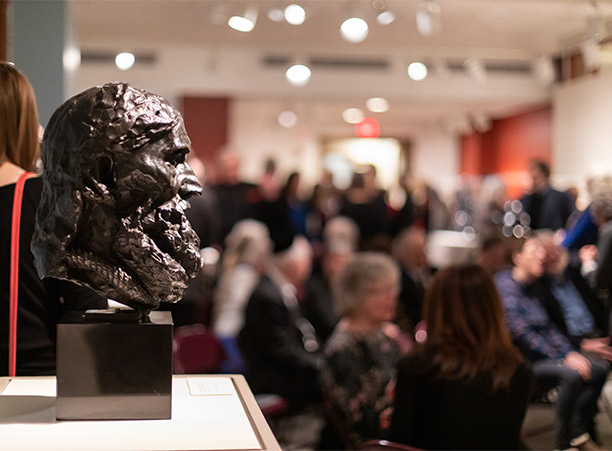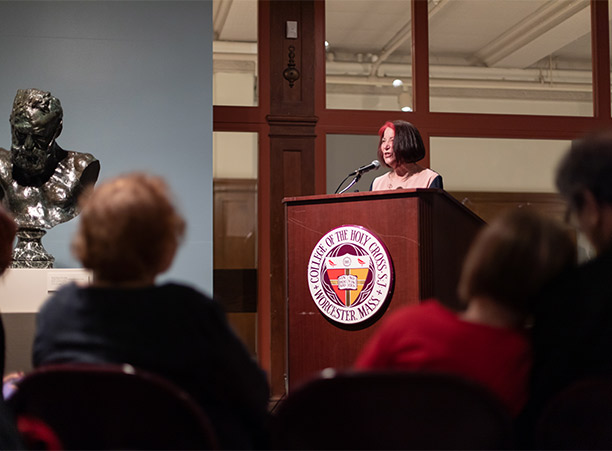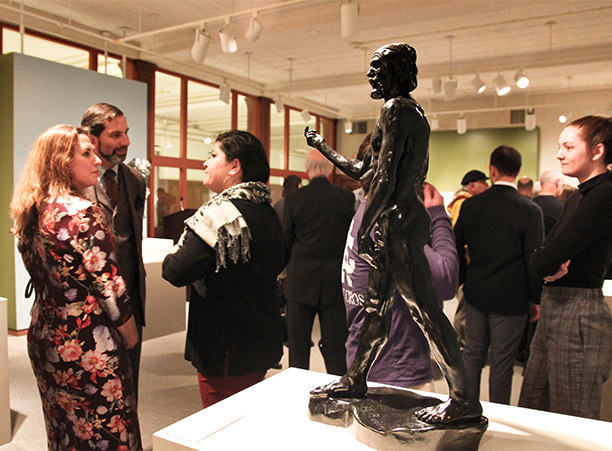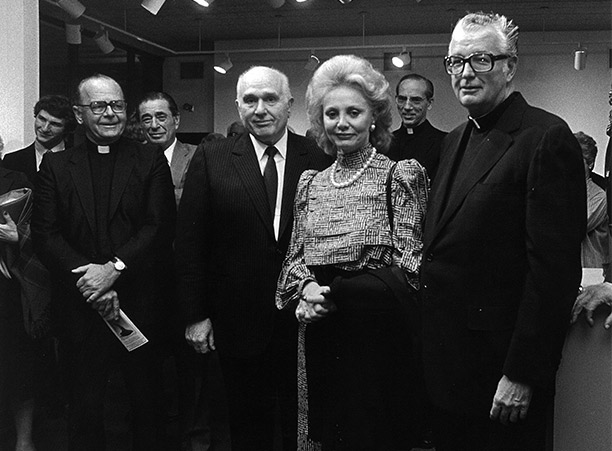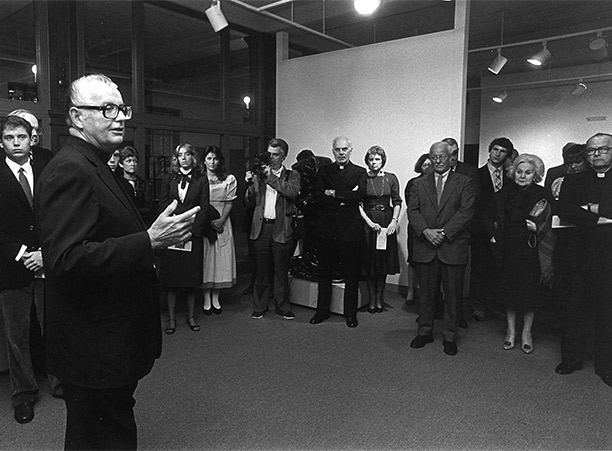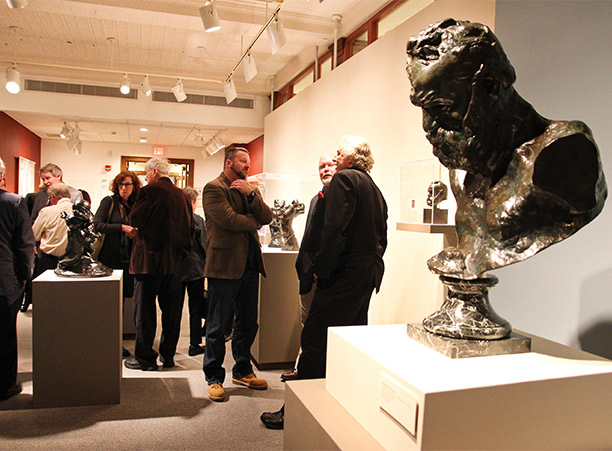
Described during his lifetime as the greatest sculptor since Michelangelo, Auguste Rodin is celebrated world-wide for bending, challenging and deconstructing artistic norms historically applied to sculpture. His characteristically expressive, masterfully textured bronze sculptures are well-known to Holy Cross, which is home to 10 works by the French artist and currently hosting an exhibition of 30-plus Rodins through April 7.
The Iris and B. Gerald Cantor Art Gallery exhibition, called "Rodin: Truth, Form, Life," includes 22 works originally sculpted by Rodin between 1860 and 1910 on loan from the Cantor Foundation collection, as well as those from Holy Cross' permanent collection which were gifts from the Cantors in the early 1980s. All pieces are later casts approved by the Musée Rodin in Paris.
"It is hard to totally grasp the exhibit's grandeur when the room is filled with people," said Rev. Philip L. Boroughs, president of Holy Cross, during the Jan. 24 gallery opening.
Amid the rough-hewn sculptures and before a packed gallery, Judith Sobol, the Cantor Foundation's curator of collections and exhibitions, and the organizer of the exhibition at Holy Cross, explained how Rodin's rejection of convention revealed new potentialities within art: "What Rodin wanted to show was people living the lives that they lived truthfully, using material to convey the structure of the body beneath the clothing. From this truth to what he saw around him, he was able to create a sense of life, not only of the people in Paris but also the life that sculpture could convey."
"Rodin created his own form of artistic expression," shares Sobol, "which today we acknowledge as having led sculpture into the modern era and that his studio practices led artists there, too."
This exhibition is fittingly timed 35 years after the opening of Holy Cross' gallery, which came into being thanks to the transformative vision of then-president Rev. John Brooks, S.J. and the donations of famed philanthropists and art collectors Bernie and Iris Cantor, who had a particular passion for collecting Rodin sculptures. In 1983, Holy Cross became the first of many Cantor-supported arts spaces in the United States, alongside major art institutions like the Metropolitan Museum of Art.
"I'm just delighted to be at Holy Cross because the Cantor Foundation has such a long history with this astonishing college," said Sobol at the recent gallery opening, explaining that it all began with a strong connection between Bernie Cantor and Fr. Brooks 30 years ago. "That resulted in a closeness, not only of these two distinguished men but also in a pact between them to make this College a mecca for extraordinary sculpture here in New England. And that's what they accomplished."
Holy Cross' Cantor Art Gallery, which now holds nearly 2,000 pieces in its permanent collection, has hosted countless historical and contemporary public exhibitions since its genesis, becoming a vital resource for Holy Cross faculty and students, linking exhibitions to the broader liberal arts curriculum.
"The presence of the gallery on campus affords the entire Holy Cross community an opportunity to experience that artistic beauty which so readily helps us attain the openness and tolerance necessary if we are to understand who we are and how we relate to one another," shared Fr. Brooks at the inaugural opening of the gallery, which kicked off — appropriately — with a Rodin exhibition.
The "Rodin: Truth, Form, Life" exhibition, which marks both the 35th anniversary of the Cantor Art Gallery as well as the College's 175th anniversary, will run through April 7. The hours for the Cantor Art Gallery are Monday – Friday, 10 a.m. – 5 p.m., Saturdays and Sundays noon – 5 p.m.
For more information on the current exhibition and related events, please visit the Cantor Art Gallery website.
Related Coverage:
- 175th anniversary photos, history and events
- ArtScope Magazine, Feb. 26: Rodin; Modernist Genius, 1840–1917: Dynamic Works Prove Sculptor’s Lasting Greatness

